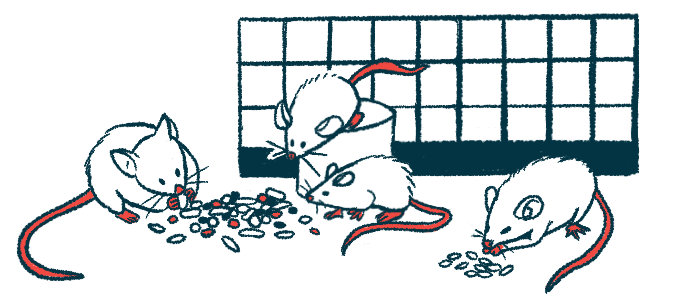Mouse Models Show Neuromuscular Junction Alterations in SBMA


Scientists have revealed specific alterations to the neuromuscular junction (NMJ) — the place where nerves connect to the muscle they control — in fast-twitch muscle fibers in two mouse models of spinal and bulbar muscular atrophy (SBMA).
The team also provided evidence for metabolic impairment and muscle fiber atrophy that correlated with the severity of the NMJ alterations.
These findings shed light on the relationship between NMJ dysfunction and both nerve and muscle changes that may help approaches to enhance NMJ function and slow SBMA disease progression, the researchers said.
The study, “Neuromuscular junction pathology is correlated with differential motor unit vulnerability in spinal and bulbar muscular atrophy,” was published in the journal Acta Neuropathologica Communications.
SBMA, also known as Kennedy’s disease, is caused by mutations in the androgen receptor gene, which encodes the receptor protein of androgens, a group of male sex hormones, such as testosterone.
These mutations are thought to result in an abnormal receptor protein building up to toxic levels inside motor neurons, or nerve cells that control movements. Specifically, damage occurs at the NMJ, a highly specialized synapse between the end of the motor neuron fiber and its connecting muscle fiber. Synapses are the junctions between two nerve cells that allow them to communicate.
The relationship between NMJ damage and motor unit vulnerability has yet to be explored, however, until researchers at Thomas Jefferson University, Pennsylvania analyzed the muscles and nerves in the lower hind limbs using two mouse models of SBMA.
An examination of the gastrocnemius muscle, the primary muscle of the calf of the leg, which flexes the knee and foot, showed significant alterations before and after the NMJ synapse of the fast-twitch fibers in both mouse models. Fast-twitch muscle fibers support rapid and powerful muscle movements.
There was also a significant deficit in the neurofilament heavy chain (NfH), a protein that plays a crucial role in maintaining the structure of nerve fibers.
Similar results were seen with the fast-twitch tibialis anterior muscles on the shin, which participates in foot movements. Here, unlike the gastrocnemius muscle, alterations were observed solely after the NMJ synapse. There was also an increase in a modified version of NfH called phosphorylated NfH.
These changes in NfH at the tibialis anterior NMJs “appear to correlate with the severity of NMJ pathology observed in both models,” the researchers wrote.
To compare, the team focused on the slow-twitch muscle fibers — that support endurance — in the soleus muscle at the back of the leg that participates in walking, running, and balance. Although there were trends towards alterations in the NMJ synapse and NfH levels, these features were substantially less than what was seen for fast-twitch muscle fibers.
Experiments to understand the mechanisms driving NMJ diseases did not find significant differences in the expression (production) of the acetylcholine receptor (AR) in the muscle between the two mouse models.
There was also no significant correlation between NMJ impairment and the expression of the AR within the NMJ — the protein that binds the signaling molecule acetylcholine released from the motor neuron to trigger muscle contractions.
Metabolic alterations were found in the fast-twitch fibers of the gastrocnemius and tibialis anterior muscles in both mouse models and the slow-twitch soleus muscle of one model.
Regardless of the metabolic state of the individual muscle fibers, all muscle fibers across all three muscle types showed a significant decrease in the cross-sectional area, consistent with muscle atrophy (shrinkage) in both mouse models.
Finally, the protein vinculin was investigated, which is involved in maintaining the structure of cells within muscles and is produced at high levels in slow-twitch muscle fibers to enable sustained contraction. In both mouse models, there was an increase in vinculin production in all three muscles, consistent with the shift in metabolism, the researchers noted.
There was also an overall decrease in the production of different forms of the myosin heavy chain protein, part of a group of motor proteins best known for their roles in muscle contraction.
“A deep understanding of the relationship between NMJ pathology and both neuronal and muscle alterations is likely to provide novel insights into approaches to enhance NMJ neurotransmission and disease progression in SBMA,” the researchers wrote.
The post Mouse Models Show Neuromuscular Junction Alterations in SBMA appeared first on SMA News Today.


